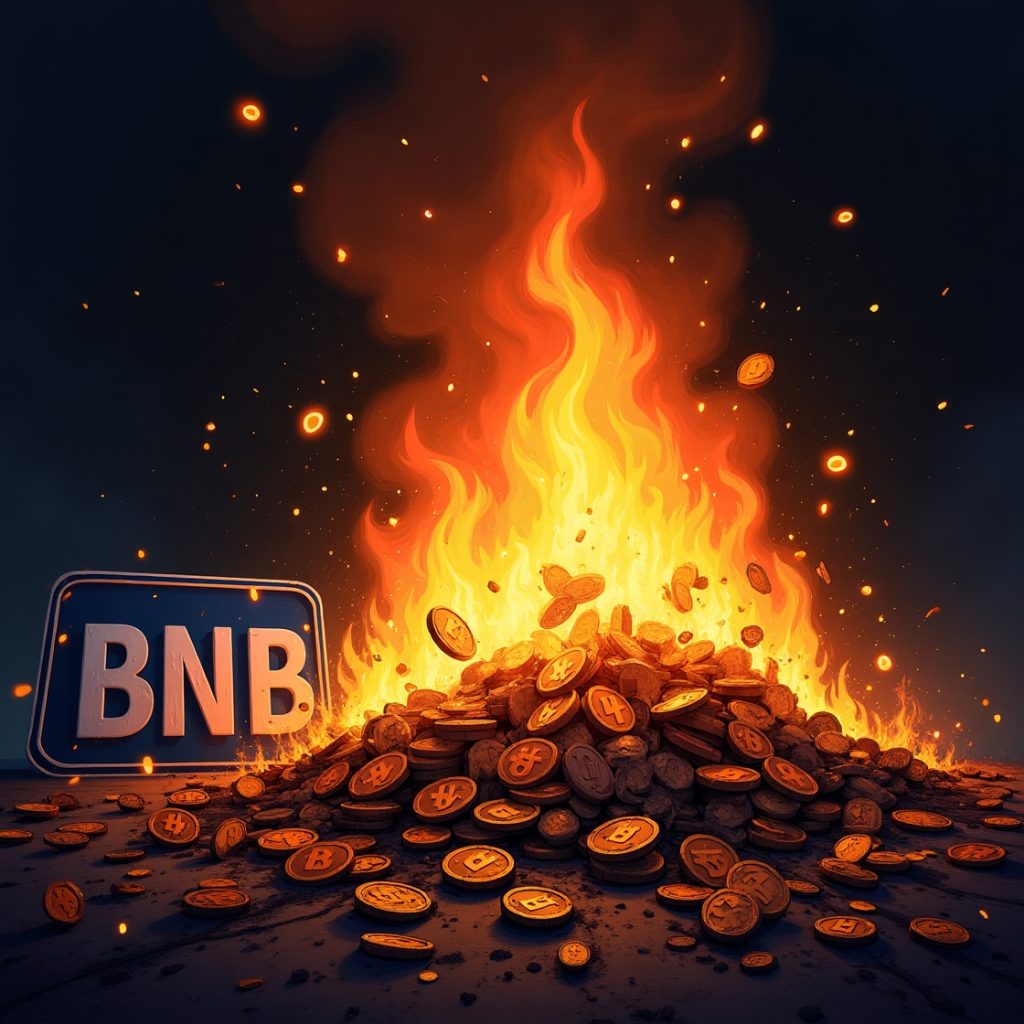The crypto market continues to boil amid major developments, with Binance, geopolitical tensions between the U.S. and China, and new insights into the performance of tokens listed on the largest exchange taking center stage. Also keeping investors’ attention is the ongoing trend of token burning as a way to regulate supply and build trust in a project. Here’s a breakdown of the week’s top headlines.
Binance Burns $916M Worth of BNB — Emission Target Closer Than Ever
Binance has completed another quarterly BNB token burn, destroying 1,579,208 tokens, which equals approximately $916 million at current market prices. This marks one of the largest burns in the project’s history.
To recap, 200 million BNB tokens were initially issued in 2017, and Binance committed to reducing the supply to 100 million by periodically burning tokens, including from trading fee revenues.
Investors generally view this initiative positively: the deflationary mechanism helps maintain supply scarcity, which theoretically supports price appreciation. Despite overall market pressure, BNB remains one of the few top-tier tokens holding strong, with many investors keeping it in their portfolios not only for price growth but also to participate in Binance Launchpads.
Binance Listing Success Rate: Only 37%
However, fresh data raises concerns: an analysis of tokens listed on Binance in 2025 reveals that the chance of making a profit using the “perfect strategy” is just 37%.
What does this mean? Even if you buy a token on listing day and sell it at the peak during the first pump wave, your chance of turning a profit is less than 40%.
The reasons lie in weakened market demand and changing investor behavior. Previously, a listing was a signal for growth, but now it often triggers a quick sell-off, especially by early-stage investors who acquired tokens at much lower prices. The “listing = pump” formula no longer works, and new investors face risks even on major exchanges.
China Sells Confiscated Crypto Through Private Firms
Meanwhile, an intriguing development is taking place in China: local authorities have started selling off confiscated crypto assets via private entities. This comes amid an economic slowdown in the country and the government’s intent to extract profits from previously frozen assets.
Professor Chen Shir of Zhongnan University of Economics and Law pointed out that such actions are operating in a legal gray area: while they don’t entirely align with China’s 2021 crypto trading ban, they also don’t directly violate it — as long as third-party firms handle the transactions.
This practice could set a precedent for other countries where crypto is banned but confiscated digital assets are increasingly viewed as a potential source of revenue.
Geopolitical Pressure: U.S. Threatens China, Nvidia Takes a Hit
Tensions between the U.S. and China continue to rise. Donald Trump announced that revenue from new tariffs on Chinese imports could replace income tax in the U.S., pointing to the scale of potential trade barriers.
In response, the White House has already threatened 245% tariffs as a counter to Beijing’s economic measures. The U.S.-China standoff is escalating, and its impact on the tech sector is becoming more direct.
Nvidia, a key chipmaker for AI and crypto mining, reported that the U.S. has banned the export of H20 chips to China indefinitely. The company has already estimated potential losses of $5.5 billion in just the first quarter.
This not only hurts Nvidia, but may also limit tech access for Chinese mining and AI companies, which could ripple through the broader crypto ecosystem.
Recent events highlight how the crypto market is increasingly influenced by macroeconomic and geopolitical factors. BNB token burning continues to build confidence in the project, but even major exchanges, as listing data shows, are losing their former edge as quick-profit platforms. Meanwhile, geopolitics continues to shake the foundations of the digital economy.
In the coming months, we can expect more regulatory pressure, especially given the rise in confiscations, tariffs, and technological isolation between global powers.
